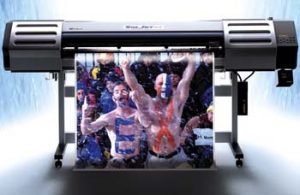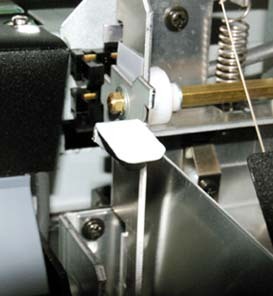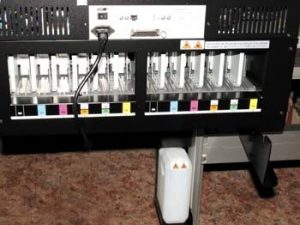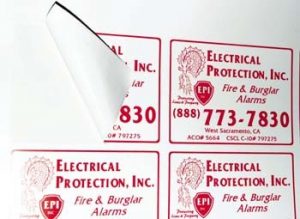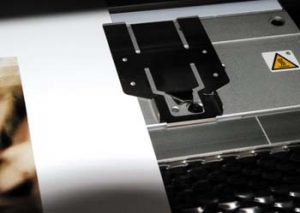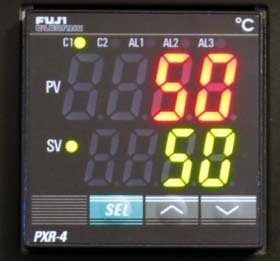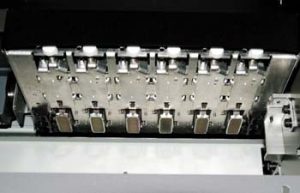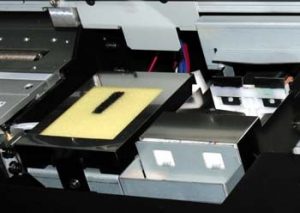Roland DGA Corporation has a reputation for offering technically innovative products, including vinyl cutters and digital printers, at affordable prices. In fact, the company pioneered environmentally friendly solvent printers to the industry. The SOLJET family allowed signmakers and digital-print providers to produce three-year, outdoor-durable, full-color images onto adhesive vinyl and banner material, without lamination.Roland DGA Corporation
Not surprisingly, several manufacturers have introduced solvent-based printers, and the competition has become fierce. A true competitor, Roland recently introduced its SOLJET Pro II series systems, which meld solvent printing and vinyl cutting into a platform built for speed and quality.
Over the years, we’ve reviewed several Roland printers and have always been impressed with their build quality and ease of use. The last Roland printer we reviewed was the SOLJET SJ. Although the new inks and media were truly impressive, the machine wasn’t the fastest printer we’ve ever reviewed. In addition, the printer lacked contour-cutting capabilities that save registration and reloading time when creating decals. However, overall, we enjoyed reviewing the old model and couldn’t wait to receive the new version.
Pro II specifications
The SOLJET Pro II SC-540EX is a beast, so you’ll need enough shop space to accommodate its size. Including the stand, the machine measures approximately 106 in. wide x 29 in. deep x 51 in. tall. An optional, media take-up reel is available, but we didn’t receive one with the review unit.
Not surprisingly, we needed some help unpacking and assembling this printer. Alone, the unit weighs nearly 300 lbs.; with the stand, it weighs 335 lbs. If the printer’s size discourages you, don’t worry. Roland dealers dispatch technicians to help with assembly. A Roland technician helped us set up the printer as well — he was very grateful we had the main unit on the stand before he arrived.
Advertisement
The printer accepts media from 8.3 to 54 in. wide; the effective printing area is 7.3 to 53 in. By using a reversible core holder, the printer can accept media rolls with 2- or 3-in. cores. The roll can measure up to 7.125 in. in diameter and weigh up to 44.1 lbs. Further, the printer can handle media thicknesses up to 0.38 in. A mechanical lever adjusts the head height before loading the media (Fig. 1). Finally, the printer features a media heater that helps adhere and dry the ink on vinyl and banner material. Both the printer and heater are standard 110V.
The SC-540EX has two interface connections: an IEEE 1284 parallel connection and a 10/100 Base T Ethernet connection. Typically, this type of printer is directly connected to a workstation or server that acts as the RIP. The SC-540EX operates at such a high speed we recommend the Ethernet connection.
Printing and cutting technology
Like all Roland printers, the new system incorporates piezo technology. Although the inkjet heads are 360 dpi, the printer can attain a true 1,440 x 1,440-dpi resolution in the highest-quality mode. Roland uses a variable-dot technology that produces three, different-sized droplets. A six-color printer, the SC-540EX uses a cyan, magenta, yellow, black, light cyan and light magenta ink set, and you actually use two sets of ink for each head.
The printer has slots for 12 standard Roland ink cartridges (Fig. 2). The bays are clearly marked, and, as we’ve noted in the past, you can load this inkjet without creating a mess. Don’t worry about ink costs doubling — the inking algorithms are very efficient, and the extra ink lets the printer run longer without additional intervention.
The SC-540EX’s integrated cutting blade (CAMM1 type) is a great addition for contour cuts of printed media, as well as standard vinyl cutting. Further, it will cut at 23.5 IPS and 12 IPS if cutting in the media-movement direction. Blade force is 30 to 300 gf.
Advertisement
Laminating the print before cutting is no problem. The printer’s built-in, optical sensor system, Quadralign



 Tip Sheet2 weeks ago
Tip Sheet2 weeks ago
 Photo Gallery4 days ago
Photo Gallery4 days ago
 Ask Signs of the Times6 days ago
Ask Signs of the Times6 days ago
 Real Deal2 weeks ago
Real Deal2 weeks ago
 Paula Fargo1 day ago
Paula Fargo1 day ago
 Benchmarks1 week ago
Benchmarks1 week ago
 Photo Gallery1 day ago
Photo Gallery1 day ago
 Women in Signs2 weeks ago
Women in Signs2 weeks ago